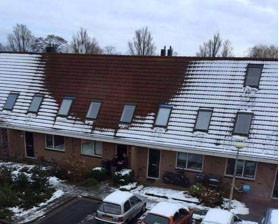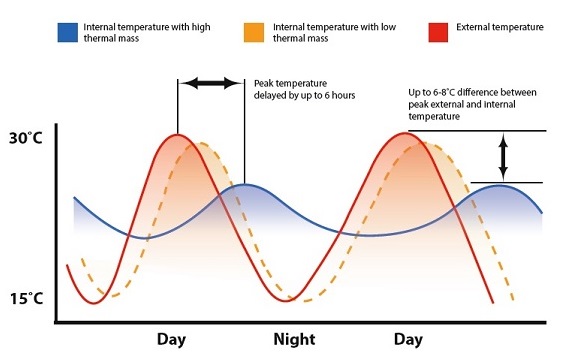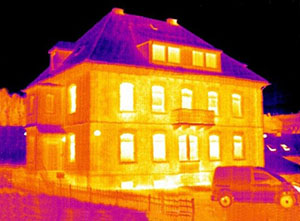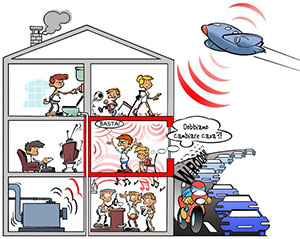Insulation, instructions for use
The insulation or the reconstruction of a roof (or the external wall insulation system of a wood house) is one of the elements that most contributes to home comfort. If it is poorly or wrongly made, it may cause a number of troubles, even without the formation of water infiltrations.
The heat coming from the sun, penetrates our houses through window glasses, walls and above all through the roof, which is the surface most exposed to solar radiation.

If the roof is not adequately designed, built and insulated, the house is hot in summer and a constant cooling action is needed (air conditioning/dehumidification system), but the problem persists.
In winter also, the roof is a weak point: most of the inside heating is dissipated just through the roof if it is not properly insulated (hot and humid air tends to go up and outwards).
There is good evidence for this particular situation in winter, when the snow melts in specific roof areas rather than in a uniform way.
An appalling roof insulation causes the following issues:

- Summery thermal lag: if a summery insulator is wrongly chosen, it warms up and transfers heat from the external to the internal surface. The heat absorbed during the hottest time of day, between 1.00pm to 4.00pm, is returned after a very few hours, uninterruptedly and until late into the evening, with the result of making the indoor environment uncomfortable.
Technically, the thermal lag is the time elapsed between the highest temperature reached on the external surface and the highest temperature reached on the internal surface (of a wall or ceiling). Therefore, this parameter (expressed in hours) is of considerable importance, as high thermal lag values (over 11 / 12 hours) can keep a comfortable environment and a constant temperature all day long.
The lag is directly proportional to the insulator mass (i.e. its weight) of an insulating package. Materials such as polystyrene or glass wool have high thermal lag values, since their weight cannot lessen the thermal wave which quickly penetrates in the hottest time of day. On the contrary, natural materials such as mineral wool, or even better, wood fibre and cork, have high lag values and give an excellent living comfort.

- Wintery heat dissipation: when a roof does not have an adequate insulation or its insulators have been wrongly laid, we deal with the so-called “cold roof”. In winter, due to external low temperatures, such a roof may cause condensation phenomena which eventually lead to the formation of moulds, fungi and drips, especially in the rooms adjacent to attics. The dissipation can be limited through an accurate laying of insulating package, regular check of thermal bridges, installation of airtight windows and application of specific rubber tapes along walls-windows or walls-roof connections where the tiniest rifts are enough for air to leak.

- Noise pollution: one of the functions of a roof which directly covers living spaces, is to protect them from noises coming from outside. Overhead noise may be annoying if the house is not provided with a suitable acoustic insulating package. Even in this case, just like for the thermal lag, light and often non-fibrous materials cannot reduce and absorb noises from outside. Regulations are very clear in this respect and in residential housing a 40 dB reduction is required for acoustic façade insulation (DPCM 05.12.97).